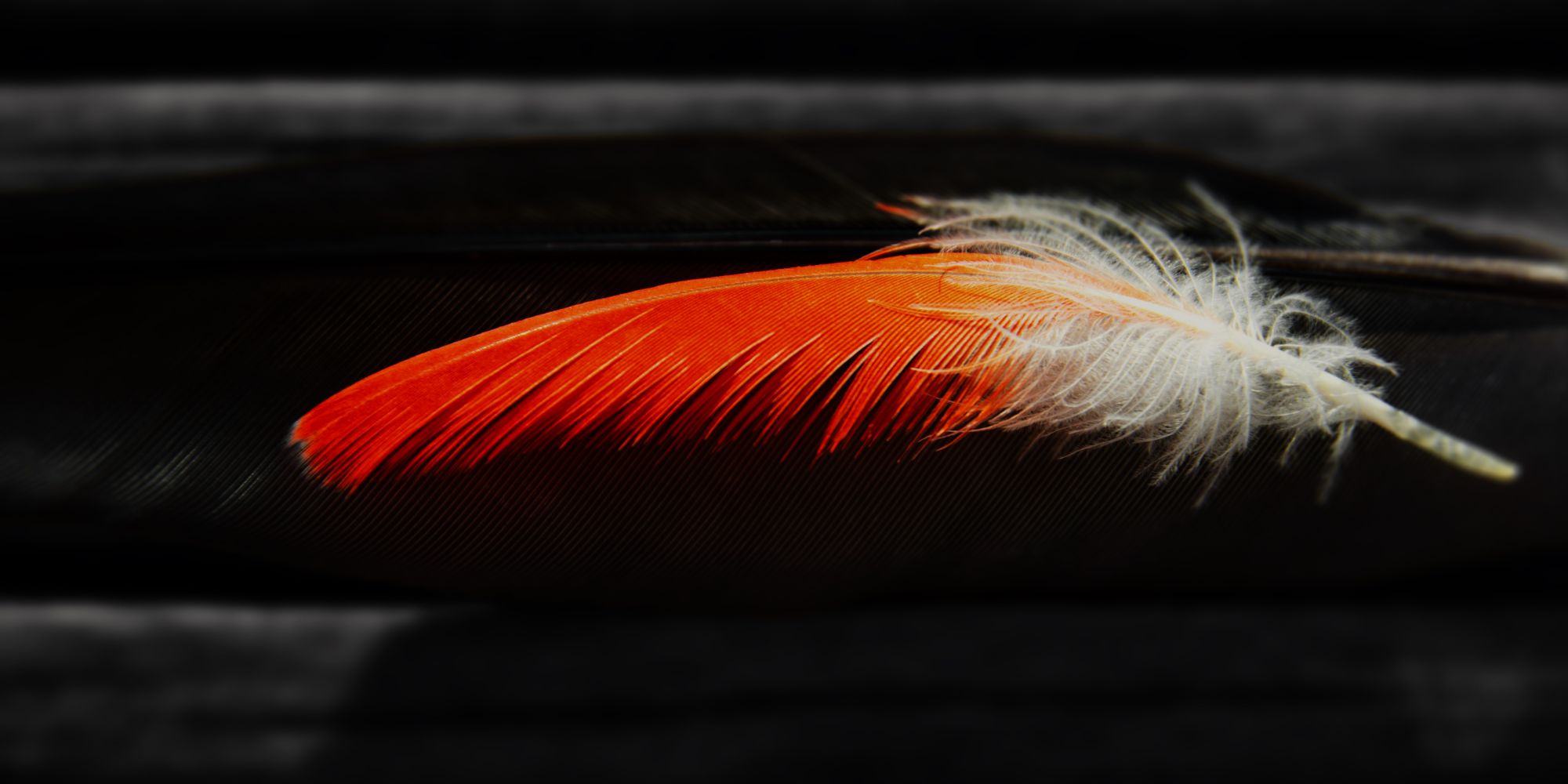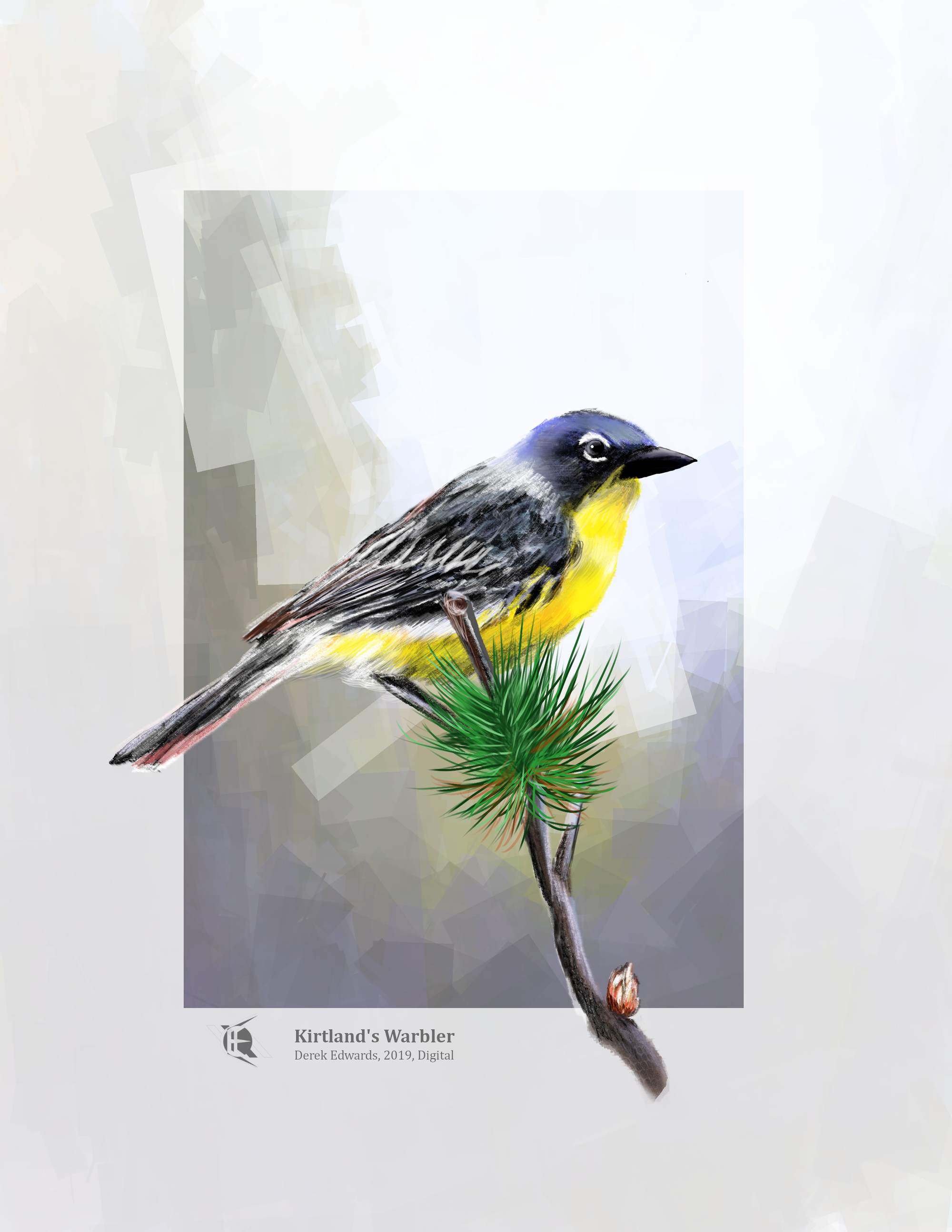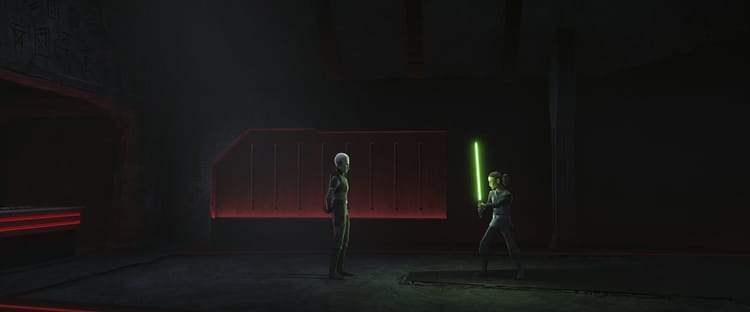
Running Commentary 6/2/2025
Hello,
I’ve just gotten back from a trip to the northern Mitten in order to see Kirtland’s warblers, which I’m re-featuring as BotW this week. I also saw a bunch of other birds for the first time, both up north and elsewhere; tallying them up I added 17 species to my life list:
- Semipalmated Plover
- Ruddy Turnstone
- Semipalmated Sandpiper
- Least Sandpiper
- Bay-breasted Warbler
- Chestnut-sided Warbler
- Blue-winged Warbler (I only heard this one)
- Field Sparrow
- Least Flycatcher
- Blackburnian Warbler
- Common Raven
- Pine Warbler
- Northern Waterthrush (I only heard this one)
- Purple Finch
- Black-throated Green Warbler
- Brewer's Blackbird
- Kirtland's Warbler
As usual I made notes of my sightings in my Birding Log.
Anyway...
Watching...

Watson
The first season of this show is done. As it went on, it got to be a lot less of a House knock-off, and it did get better for it. From the premise of Dr. Watson returning to medicine after Sherlock Holmes’s death (so far as we can tell, he is dead, though of course I don’t think he really is) I would not have guessed that so much of the show would be about near-future sci-fi genetic engineering, but once we got into it, it did rather work. It wasn’t very Holmes-y, but I think it worked. The genetics stuff was set up pretty well, before it became the central part of the show. Beyond that, we got a good blend of medical mysteries and more traditional, criminal mysteries. I think the best episode was “The Man with the Alien Hand”, which was, not coincidentally, the most like a Sherlock Holmes story. This isn’t the greatest show in the world but I found it entertaining for a network doctor show, and Morris Chestnut and Randall Park both carried their scenes well. Next year we’ll have another season.

Bird of the Week
I first wrote about this bird in 2021, when I was looking at Michigan’s State Bird and other birds that might replace the robin in holding that honor. At that time, I had never seen a Kirtland’s warbler. Now, I have just returned home from a trip to see these birds at their nesting grounds. I have rewritten my write-up with better citations and some extra thoughts on birding based on this recent experience.
Kirtland's Warbler is the largest wood-warbler, and the rarest. They nest exclusively on the ground below the low branches of young jack pine trees, those between three and fifteen feet tall (older pines lose these ground-level branches). The species was first described from specimens found in Ohio, but the Great Lakes lumber boom of the 19th Century drastically reduced their breeding grounds to just the interior northern region of Michigan's Lower Peninsula; still today, the main place they can be seen in the summer is the forests around and to the east of the town of Grayling. They migrate, spending their winters in the Bahamas.
The Great Lakes region is the site of many glacial outwash plains, deposits of sandy soil left by the drainage of melting ice that receded in prehistoric times. This poor-quality soil supports only quite hardy vegetation, such as the jack pine, a scraggly conifer that is ubiquitous in the “up north” parts of Michigan. During the lumber boom of the 19th century, many jack pines were cut down. Habitat loss certainly led to a decrease in numbers for what many people call simply the "jack pine bird", though it is not thought that the Kirtland's Warbler was ever especially numerous. Kirtland’s warblers are exceedingly picky about where they nest, constructing a cup of grass and pine needles in the brush under jack pines between 5 and 20 feet tall. Naturally, such stands of pine saplings were established after a wildfire cleared the mature trees in a patch of land; from the 19th century onwards, fire suppression efforts have impeded formation of the warbler’s nesting habitat, and today conservationists maintain plantings of jack pines specifically to serve as nurseries for this species.
The ornithological boom in colonial and early independent America missed this bird, which was first described to science in 1857 by Spencer F. Baird, the first curator of the Smithsonian Institution, based on a specimen shot on the property of Dr. Jared P. Kirtland, a Cleveland physician. (To science, the bird is Setophaga kirtlandii, or “Kirtland’s moth-eater.) The first to find a nest, in 1903, was Norman A Wood, of the University of Michigan's Museum of Zoology, who had traveled along the Au Sable River in search of the rare bird. Further knowledge of the bird's nesting habits, specifically their apparent need for young jack pines and their susceptibility to nest parasitism by the brown-headed cowbird, came from the studies of University of Chicago student Nathan F. Leopold (who would go on to infamy as one-half of the Nietzche-inspired duo of child murderers Leopold and Loeb.)^2^ In 1951, the Kirtland's Warbler had its entire population censused. At that time, they numbered roughly 1,000. Through the '50s, '60s, and '70s numerous measures were taken to preserve the bird and its habitat. ^3^ Today, there are estimated to be roughly 5,000 Kirtland's warblers, nesting in northern Michigan, southern Ontario, and central Wisconsin. The species is no longer considered endangered as of 2019, though it remains dependent on artificial plantings of jack pines.^3^
The importance of Michigan to the warbler has led to several proposals that it replace the robin as Michigan's state bird, most notably from Kirtland's warbler booster Bill Rapai.^4^ My own personal take on that is that, while I get the idea, the Kirtland's warbler is just too rare a sight. Most Michiganders have never and will never see one. Where the robin is hardly unique to the state, it can be seen throughout it. Even when I went to see them, I was only able to get a quick glance, and I wouldn’t have known what they were if they hadn’t been singing. Census takers who monitor the bird’s population are also dependent on listening for their song to get counts, since the Kirtland’s warbler, like many warblers, is visually elusive.
And that brings me to my thought on birding: I call birding “birding” instead of “birdwatching” mainly to save a syllable but also to emphasize that it’s not a purely visual activity. Often you’ll only hear birds, and if you do see them, it will have been their song that alerted you to their presence, and often to their identity. When I count a new species on my life list, I count it as “observed”, not “seen”; at present there are only two birds on this list that I’ve only heard, not seen, since I don’t count a heard bird unless I can tell from what obstructed perch it’s singing, and could be confident that it’s the bird I’m hearing if it did go flying. A handful of other species on my list, including the Kirtland’s warbler, I’ve only seen as one has gone flying off from where it was singing, and it’s only by their songs that I was able to ID them as anything but a dark little blur. This rule is only my own; the American Birding Association says a bird is encountered if it is “seen and/or heard live” and can be ID’d if “diagnostic characteristics, sufficient for the recorder to identify it to species, …have been seen and/or heard and/or documented for the bird encountered”.^5^ By these standards I’ve “encountered” and (with the aid of reference guides) ID’d a hermit thrush, but I don’t count this bird on my life list because a) I only heard it a ways off in the woods and had no hope of spotting it and b) I wasn’t able to recognize it’s song on my own. At the same location I heard a white-throated sparrow singing, and I counted this on my eBird list, since I knew what it was by ear, even though it was similarly distant and out-of-sight. A life list is, ultimately, a matter of honesty, and I’m not nearly as good at birding by ear as by sight, so I personally hold my hearings to a higher standard than my sightings; I’ve absolutely counted birds I’ve seen but not recognized in the field. What rules you’ll hold yourself to are up to you.
- Jobling, J. A. (editor). The Key to Scientific Names in Birds of the World (S. M. Billerman et al. editors), Cornell Laboratory of Ornithology, Ithaca.
- Karikehalli, Shweta. “The Surprising Connection Between the Kirtland’s Warbler and the Birding World’s Most Famous Murderer.” Audubon, April 22, 2025. https://www.audubon.org/magazine/surprising-connection-between-kirtlands-warbler-and-birding-worlds-most-famous-murderer.
- FWS.gov. “Kirtland’s Warbler,” August 1, 1998. https://www.fws.gov/media/kirtlands-warbler-1.
- Rubin, Neal. “Endangered No More, Could Kirtland’s Warbler Replace Robin as State Bird?” The Detroit News, July 13, 2019. https://www.detroitnews.com/story/news/local/michigan/2019/07/13/kirtlands-warbler-leaves-endangered-species-list-replace-robin-michigan-state-bird/1443667001/.
- American Birding Association. “ABA Recording Rules & Interpretations - American Birding Association,” April 11, 2025. https://www.aba.org/aba-recording-rules-and-interpretations/.
Curation Links
Agnes Catlow’s Drops of Water | The Public Domain Review
“Agnes Catlow’s Drops of Water; Their Marvellous and Beautiful Inhabitants Displayed by The Microscope (1851), was published toward the beginning of miscroscopy’s second wave. Focusing on animalcules, or Infusoria (the ‘little animals’ that infuse stagnant water, undetectable to the naked eye), Catlow acts as a friendly guide to any amateur in possession of a good microscope — an inexpensive instrument that not only provides entertainment ‘at all seasons of the year’ but permits us to enter an ocular wonderland.”
Alton Brown: A Culinary Legend Offers Food for Thought | Nick Gillespie & Alton Brown, Reason [AUDIO] Interview with the former host of Good Eats regarding a new book of essays. Brown gives his thoughts on proper pizza, the USDA, whether Americans are getting better or worse at cooking, and Martha Stewart. (1 hour)
The Father of Modern Metal | Jonathan Waldman, Nautilus Excerpt from Waldman’s Rust: The Longest War, which is a book worth reading in full, telling of Harry Brearley’s invention of stainless steel, which was not the first invention of the material but was the one that led to the industry. “The stuff he cast from the electric furnace at Firth’s on Aug. 20, 1913, was nothing new. At least 10 others had created it, or something like it, before; at least half a dozen had described it; and one guy even explained it, and explained it well. Others had patented it, and commercialized it. Before Brearley got around to it, at least two dozen scientists in England, France, Germany, Poland, Sweden, and the United States were studying alloys of steel by varying the amounts of chromium, nickel, and carbon in it. Faraday had tried as much nearly a century earlier. It’s not like Brearley was exploring unknown territory. That he is credited with discovering stainless steel is due mostly to luck; that he is credited with fathering it is due mostly to his resolve.”
Strip Mall | Leigh Alexander
[FICTION] An interesting story of a stretch of shops as told through a series of online reviews.
See the full archive of curations on Notion






Member Commentary